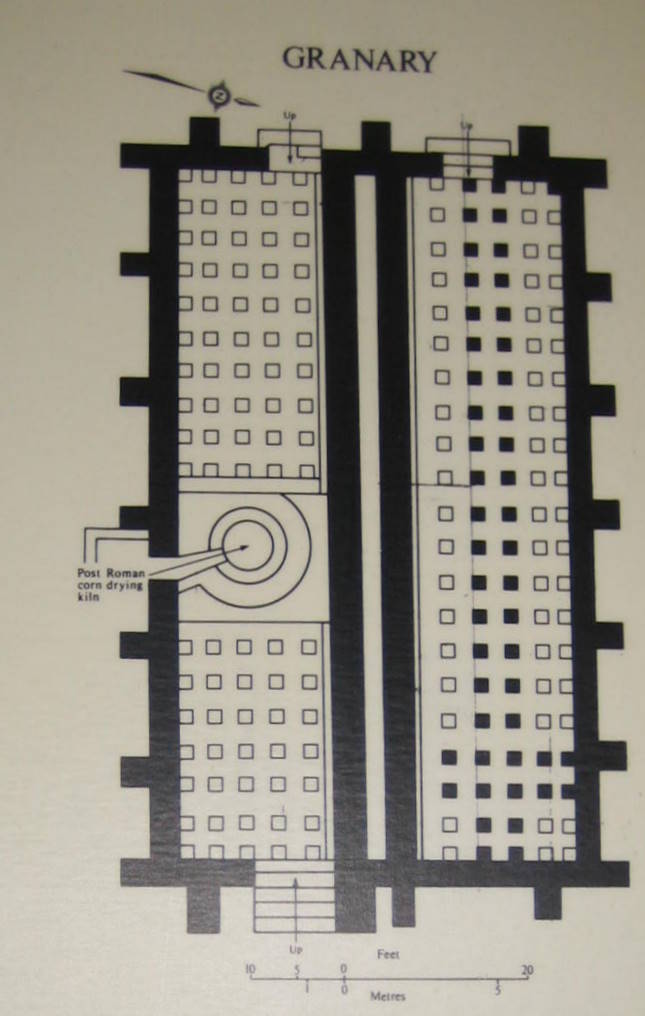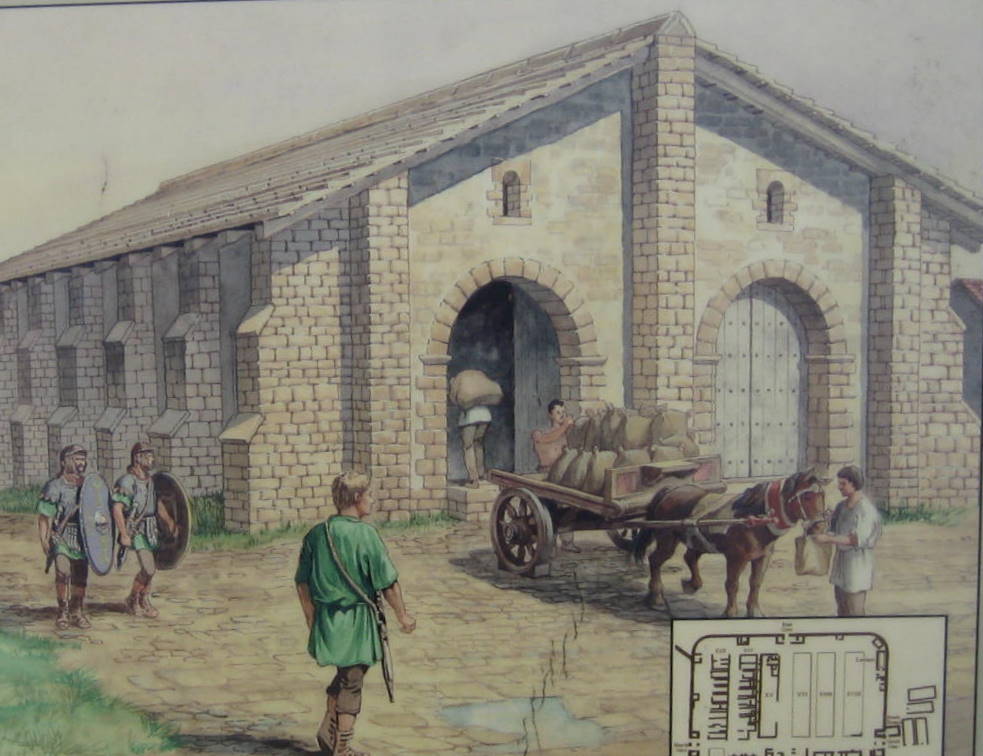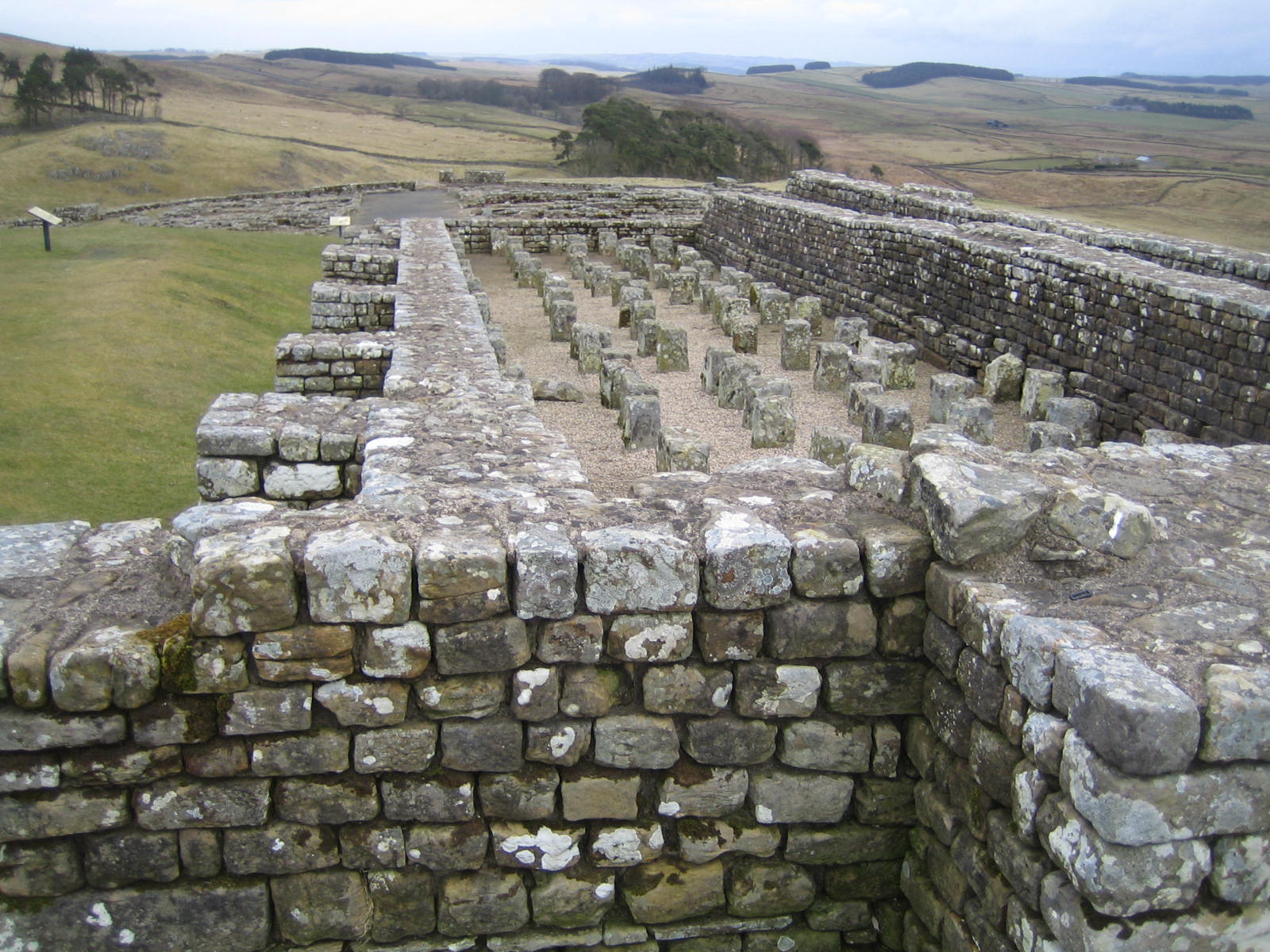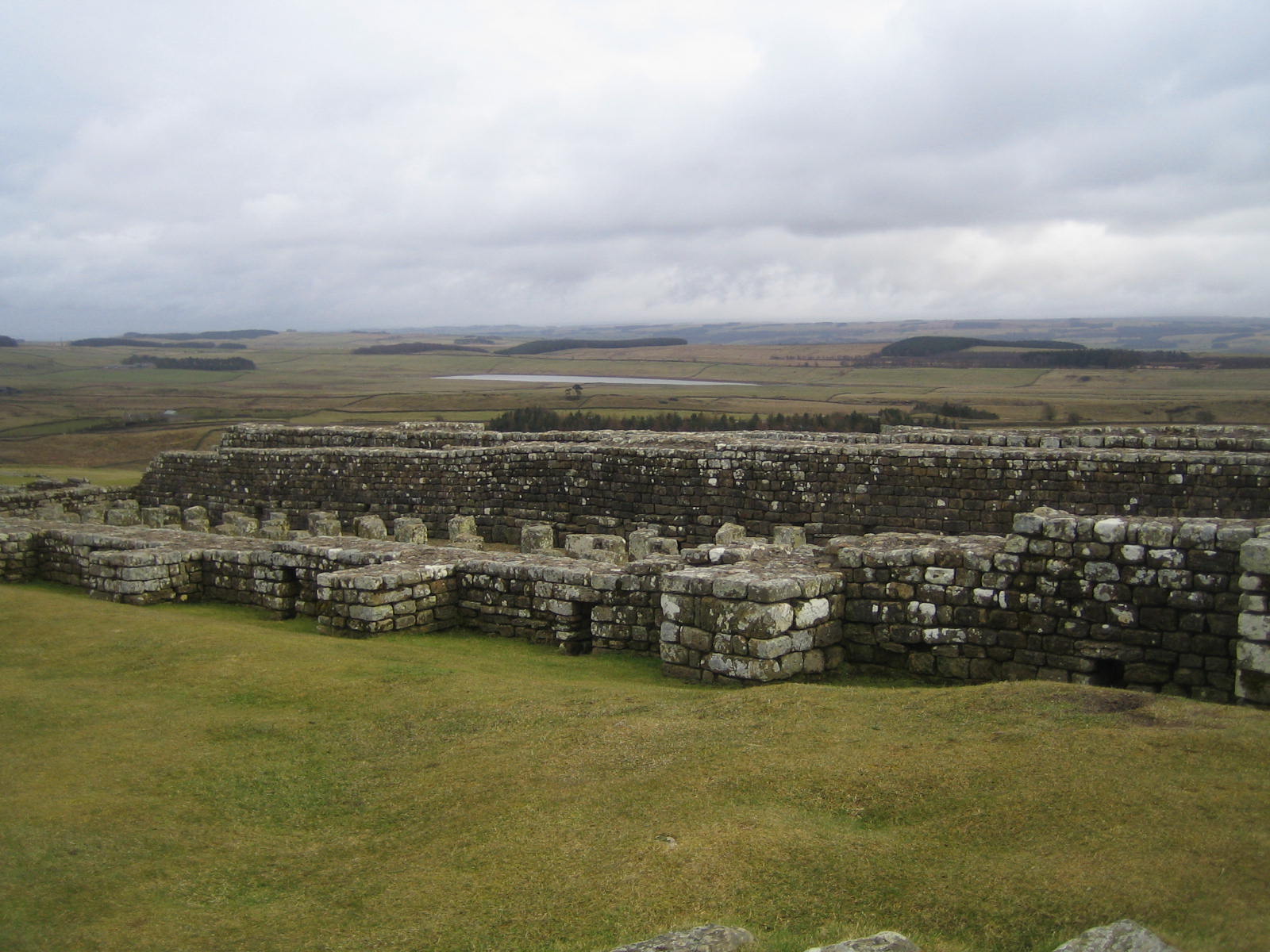The Granaries
Visited 20 March 2006
Archeologists who study Roman army latrines tell us the
army's diet was primarily grain.
(And you thought your job was bad!) Therefore safe and adequate grain
storage was an important element in the design of permanent forts. Housesteads'
granary (horrea) is literally high and dry, being among the uppermost
buildings on this hilly site and perched on an elevated floor.[17]
This left a cool and dry building also suitable for storing meat
(although the army typically stored that on the hoof.)
 |

Left: Diagram of the Granaries from
the Housesteads Museum; Above: Drawing found on the site of the ruins
depicting the granary before it was separated into two sections, each with
its own ridged roof.
We see above the west doors of the granaries.
Originally this was one single hall but was later divided into two
separate rooms, each with its own roof. The entrances were at the
west end as grain entered through the west gate to reduce traffic on the
busier eastern and southern gates.[17] |
Fort granaries would store grain sufficient for their troops plus reserves
for sieges and campaigns. Below are the pillars (shown as small squares in
the diagram at upper left) which lifted the wood floor above the damp and
vermin. Often fort granaries had vents on the outer wall to promote air
circulation. When first constructed, the granary had two aisles separated
by six piers holding the ridge of the roof. Later the space was divided
into two sections, each with its own ridged roof. (Housesteads was pretty
much permanently under construction as the army remodeled buildings to address
their changing needs, usually by pulling stones from an obsolete building to
modify or create a new one, after all, the quarry for new stone could be a 100
miles or more away.)
 |
Below is a side view of the buttresses that pushed back upon the wall so that
it could support a heavy roof without being pushed outward; their size suggests
that there may have been a second floor. The roof extended over wide eaves
to keep the outer walls dry. A large roof such as the granary had would
most like have a large drainage system feeding water into holding tanks for
later use.
During the late fourth century, the army reduced the number of men stationed
at Housesteads and the granary was further divided, perhaps with part of it for
the army and the rest for the area tax collections (which could well be in
grain, of course. By the 3rd century, monetary inflation was rampant and
taxes were often collected in kind rather than in coin.[12]
)
Created on 15 October 2006

This
work is licensed under a Creative
Commons Attribution-NonCommercial-NoDerivs 2.5 License.



